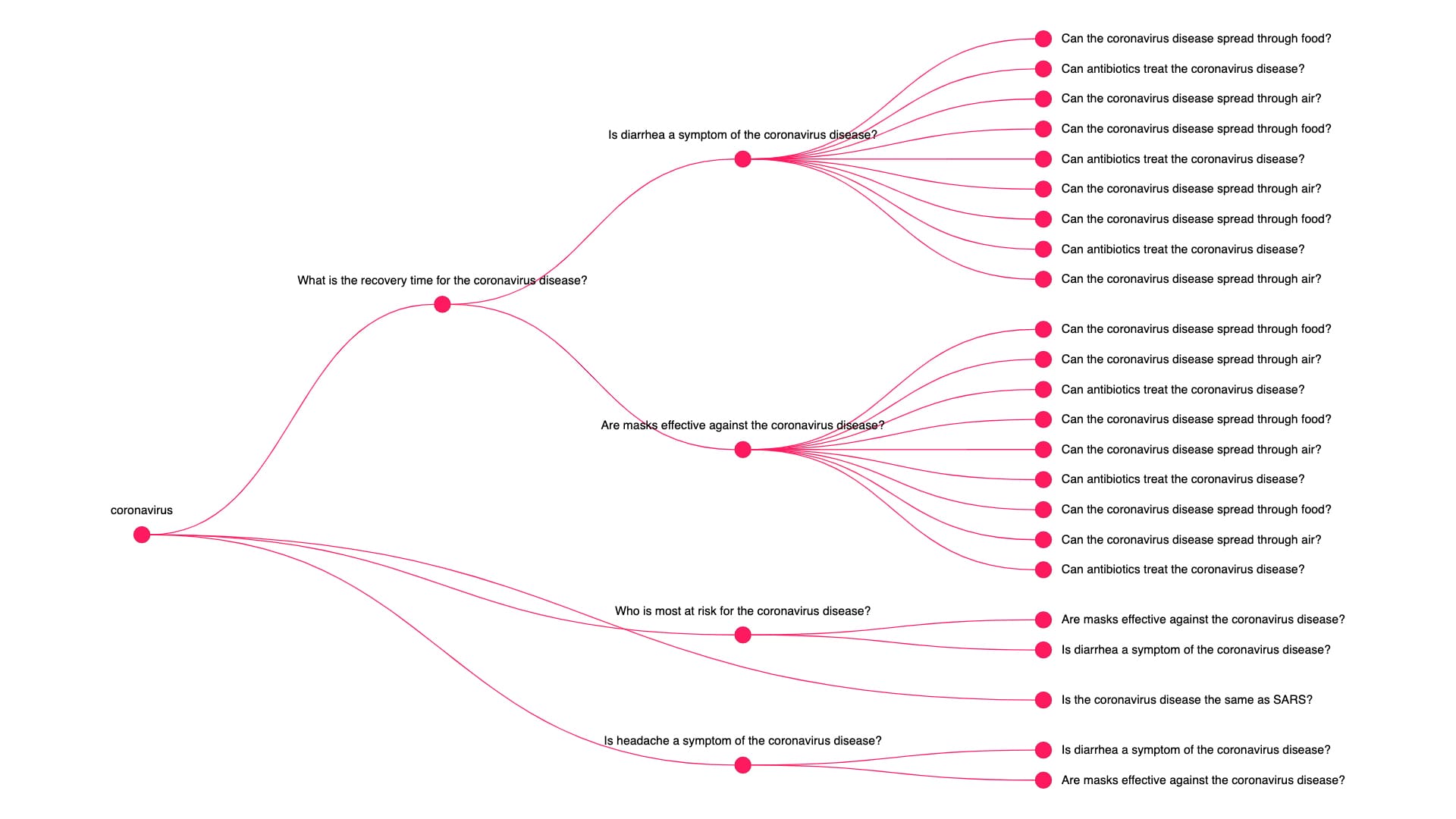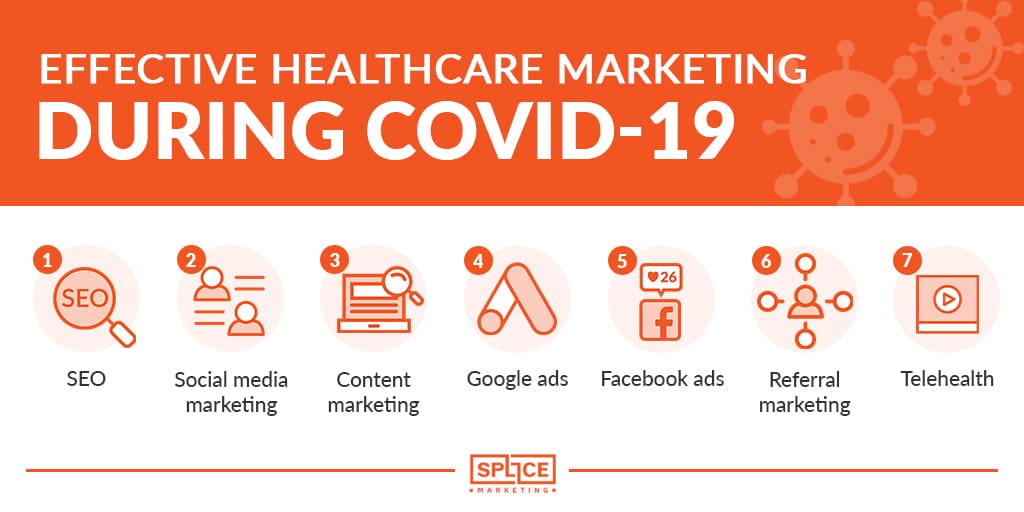COVID-19 has deeply affected our nation, our communities and our small businesses. It has no doubt been tough for you as a healthcare provider and a business owner. You’ve made it this far but you may be wondering what the next 12-18 months will be like.
Here you’ll learn marketing strategies to get your practice to the other side. We’ll start by looking at the purpose of marketing, thinking about what your audience needs and what you have to offer. Then we’ll show you how to market your practice effectively during this time.
The Purpose of Marketing
Healthcare marketing is the process of getting people interested in your practice and your services and converting that interest into a booked appointment. It’s basically the process of gaining and retaining patients. That’s why you need to keep on doing it, even – and especially – now.
Remember What You Have to Offer
We’re living through a global pandemic. It’s a rapidly changing, scary situation that’s changed life as we know it.
But remember, you are a highly trained healthcare professional. We trust you.
We trust your ability to sift quality evidence from reputable sources, to correct misinformation and provide reliable advice. We trust that you’re acting in our best interests. That’s why we want to hear from you.
Regular communications from you to your patients is important. Communications about COVID-19 and other health conditions that your patients are still experiencing.
Think About Your Audience
They may not be sitting in your waiting room, but your ideal patients are still out there. They’re most likely at home right now and probably have more health-related questions than ever before. They’re taking their questions to Google; marketing helps Google deliver your answers.
Figure 1: Top Google Searches related to Corovavirus in Australia as of 1 May 2020

The Costs of Stopping Your Marketing During COVID-19
Pausing your marketing during a tough period may ultimately cost you more money in lost patients than you save in hard cash.
If your practice is struggling financially, it makes sense to trim costs wherever you can, reviewing your subscriptions, getting a better deal on insurances and trying to reduce your overheads.
Cutting your marketing costs is a false economy though. Ultimately, it costs you patients – the very people you most need to keep your practice going.
Those practices that have maintained their marketing throughout this crisis are beginning to see their bookings rise. Others are maintaining their Google rankings or gaining new patients through marketing their telehealth service. Some of these are long-term, slow-burn activities that cool off quickly when you stop investing in them and take a long while to rekindle.
Pausing your marketing during a tough period may ultimately cost you more money in lost patients than you save in hard cash.
That said, you do need to market yourself differently during this pandemic. Here’s how.
Effective Healthcare Marketing During COVID-19

Here are the marketing strategies that are working right now for healthcare professionals during these unprecedented times:
Email Marketing
- Email is the most effective channel to communicate with your current patients. Let them know that your practice is still operational and how you are delivering your services.
- Send frequent emails addressing some of the frequently asked questions of your patients as no doubt, many of your patients will share the same questions.
Search Engine Optimisation (SEO)
- SEO is a long-term strategy so don’t pause it now as you’ll rapidly lose ground to your competitors.
- Adapt your SEO to attract people with high healthcare needs who continue to need care during this time (and will need it afterwards too!)
Social Media Marketing
- Your patients are stuck/safe at home and spending a lot of time on social media.
- Use your social accounts to provide practice updates and share your blog content.
Content Marketing
- Tell your patients how you’re handling COVID-19:
- Add clear advice to your website about how to make an appointment during this time, such as explaining that people should ring first rather than just turn up, that you’re offering telehealth consults to most patients and only seeing people in person when you’ve decided it’s not possible to treat them in any other way
- Put a clear and obvious link to this information on the homepage and across your social media accounts.
- Use your authority and credibility as a trained healthcare professional to serve your patients and community by:
- Being a source of trustworthy information about COVID-19
- Helping people maintain physical and mental health during this time at home
- Reminding people, particularly those in vulnerable groups, about the importance of maintaining care for underlying conditions during this time
- Providing healthcare services (in one form or another) to patients who need you
- Being a stable, reassuring presence in a changed world.
- Each time you upload a new blog to your website, add your name, credentials, photo and bio to boost your Google’s EAT score (expertise, authoritativeness and trust).
Google Ads and Facebook Ads
- Keep them going if you possibly can as it keeps you in a position to benefit from the eventual post-isolation rebound.
- People are spending a lot of time online and you want them to see you there.
- Update your ads to ensure they’re relevant to the situation we’re in now as that’s what’s in everyone’s mind.
- Remember, you only pay when people click on your ad – and you want them to do that.
Referral Marketing
- Your referral networks are a vital source of patients
- How are you working now? Maybe you’re a surgeon providing pre-op care through Zoom so patients are ready for eventual surgery, an allied health professional providing home visits, or a chronic disease specialist providing telehealth services to prevent avoidable hospital admissions.
- Whatever you’re doing, tell your referral networks how you’re offering services during this time and remind them why they should keep referring patients.
Telehealth
- You need to keep seeing as many patients as you can. Telehealth offers a safe and convenient way to do this in most cases and patients love it.
- Update your online booking system so patients can book a telehealth appointment easily
- Produce a flyer or email template to explain how your telehealth service works
- Promote your telehealth service through all your marketing channels – Google Ads, Facebook ads, content marketing, SEO and your referral networks.
Read our tips on launching and marketing your telehealth service
Plan for the Rebound
After a rough few weeks, Australia’s COVID-19 cases are declining and some social restrictions are gradually being lifted.
Does that mean we’re past the worst of it here? Can your business get back to normal now? Or will there be a second wave of COVID cases as there was with the Spanish flu a century ago?
We don’t know – and we’ll be living with uncertainty for a while to come. You need to be realistic about the timeframes involved here. Do some planning for the next three months and some for the next 12-18 months.
The rebound will come at some point. As restrictions lift, people will be keen to book in with their medical and allied health providers to attend to niggling problems that were put on hold due to lockdown. Anticipate this, and call your patients to schedule appointments in the coming weeks.
Remember the Other Curves
We seem to be doing well at flattening the COVID-19 curve. But the economic curve and the mental health curve may start to look more like mountain peaks than foothills in the coming months.
If your patients are living on a tighter budget, they may not be able to afford your services. Is there anything you can adjust or any helpful mini-service you can create that would be cheaper? Look into ways to diversify your income to build a cushion for the next couple of years.
We can help you market your new services and diversify your client base.
Conversely, some professionals may be busier than ever after COVID-19. Psychologists, psychiatrists and counsellors may see an influx of patients dealing with COVID-induced anxiety and depression. If that’s you, how will you deal with it?
Telehealth Will Stay
COVID-19 has created some lasting changes to healthcare practice and telehealth is one of them.
Whether you think your practice will be quieter or busier in the months ahead, we’d encourage you to keep your telehealth service going.
It enables you to attract new patients, including those who live too far away for a face-to-face appointment and those who live nearby but prefer the convenience of telehealth for routine care. It also means you can provide out-of-hours care from the comfort of your own home if you wish.
Telehealth can become an additional revenue stream for your practice especially if you’re offering after-hour Telehealth appointments.
Telehealth will have a life beyond COVID-19 and can be a lifeline for your practice.
Next Steps
If you’d like help working out the best use of your marketing budget during COVID-19, please get in touch with the team at Splice Marketing. We’d love to help.






